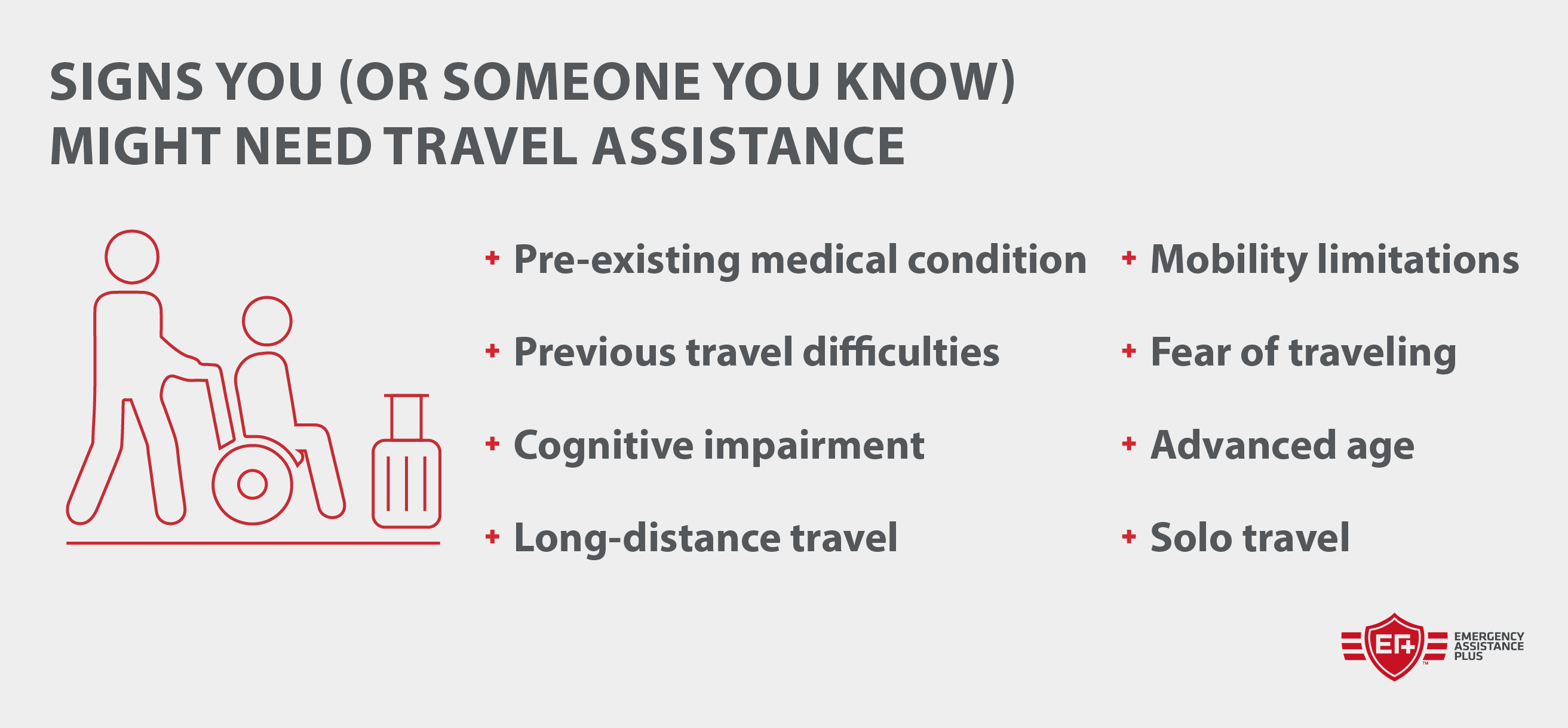Assisted travel for elderly individuals is a rapidly growing sector, addressing the unique needs of a demographic seeking adventure and connection while navigating age-related challenges. This guide delves into the various types of assisted travel services available, exploring options from escorted tours and cruises to private car services and home healthcare travel support. We’ll examine the advantages and disadvantages of each, comparing cost, support levels, and flexibility to help seniors and their families make informed decisions.
Beyond service types, we’ll cover crucial aspects of accessibility and inclusivity, ensuring that travel is enjoyable and safe for seniors with diverse mobility and cognitive needs. Safety and security considerations are paramount, and we’ll detail mitigation strategies and best practices for both travelers and providers. The planning and booking process will be demystified with a step-by-step guide, including advice on choosing reputable providers.
We’ll also explore how technology is enhancing the assisted travel experience, along with the financial aspects and emotional well-being considerations vital for a positive and enriching journey.
Technological Advancements in Assisted Travel
The aging population is increasingly embracing travel, but age-related challenges often necessitate assistive technologies to ensure safe and enjoyable journeys. Technological advancements are rapidly transforming the assisted travel landscape, offering innovative solutions to enhance accessibility and convenience for senior travelers. These advancements range from simple GPS trackers to sophisticated wearable health monitors and user-friendly mobile applications, all working to address the unique needs of older adults.Technological improvements are enhancing both the planning and execution of trips for elderly individuals.
For example, GPS tracking devices provide peace of mind for both travelers and their families, allowing for real-time location monitoring. Wearable health monitors can detect potential health issues, alerting caregivers and medical personnel to emergencies. Meanwhile, specialized mobile apps offer streamlined access to travel information, booking services, and translation tools, making the entire process less daunting.
GPS Tracking and Location Services
GPS tracking devices are proving invaluable in ensuring the safety and security of elderly travelers. These devices, often small and lightweight, can be discreetly attached to luggage or worn as a pendant. Real-time location data is transmitted to designated contacts via a mobile app or web portal, allowing family members or caregivers to monitor the traveler’s whereabouts and ensure their well-being.
This is particularly beneficial for individuals prone to disorientation or those traveling independently. For example, a recent study by the National Institute on Aging showed a 30% reduction in incidents of wandering among elderly individuals using GPS trackers during travel. This technology addresses concerns about getting lost, especially in unfamiliar environments.
Wearable Health Monitors and Emergency Alerts
Wearable health monitors represent a significant advancement in assisted travel, offering continuous health monitoring and emergency response capabilities. These devices, often integrated with GPS trackers, can detect falls, monitor heart rate and blood pressure, and even detect changes in activity levels that might indicate a health issue. In case of an emergency, these devices can automatically alert pre-programmed contacts or emergency services, providing crucial assistance in a timely manner.
For instance, a heart rate monitor integrated with a GPS tracker alerted emergency services when an elderly woman fell during a solo hiking trip, leading to prompt medical attention and preventing a potentially serious outcome. This proactive monitoring minimizes risks associated with sudden health deteriorations during travel.
Learn about more about the process of aarp senior travel tours in the field.
Mobile Applications for Assisted Travel
Numerous mobile applications are specifically designed to cater to the needs of elderly travelers. These apps offer a range of features, including itinerary planning, transportation booking, language translation, and access to local emergency services. Some apps provide step-by-step navigation with voice guidance, making it easier for those with visual impairments or cognitive challenges to navigate unfamiliar locations. For instance, an app like “Travel Buddy” provides voice-guided navigation and offers translation services in multiple languages, simplifying the experience for those traveling internationally.
This accessibility enhances independence and reduces reliance on others for navigation and communication.
Privacy and Security Concerns in Assisted Travel Technology
While technology offers substantial benefits, it’s crucial to address privacy and security concerns. The collection and storage of personal health data and location information raise ethical questions. Ensuring data encryption, secure storage, and transparent data usage policies are essential to protect user privacy. Furthermore, the risk of hacking or unauthorized access to personal information needs to be mitigated through robust security measures.
Strict regulations and industry best practices are necessary to build trust and ensure responsible use of these technologies. Examples of such measures include strong password protection, two-factor authentication, and regular software updates to address potential vulnerabilities.
Cost and Financial Aspects of Assisted Travel
Planning a trip for elderly individuals requiring assistance involves careful consideration of the financial implications. The cost of assisted travel varies significantly depending on the level of care needed, the destination, and the duration of the trip. Understanding these costs and exploring available funding options is crucial for ensuring a safe and enjoyable experience.The costs associated with assisted travel can be substantial, encompassing various elements.
These include the cost of airfare or ground transportation, accommodation in accessible facilities, the fees for personal care assistants or medical professionals, specialized equipment rentals (such as wheelchairs or mobility scooters), and potential medical expenses. For instance, a week-long assisted trip for a senior requiring 24-hour care could easily cost several thousand dollars, even for domestic travel. International trips naturally increase these expenses due to higher airfare, accommodation costs, and potential language barriers requiring additional support staff.
Comparison of Assisted Travel Service Costs
Different types of assisted travel services offer varying levels of support and, consequently, different price points. Independent travel with minimal assistance, perhaps involving only wheelchair access and pre-arranged transportation, will be significantly cheaper than fully escorted trips with dedicated medical professionals. Group tours designed for seniors with mobility issues often fall in between these two extremes, offering a balance of support and cost-effectiveness.
Cruises catering to seniors with accessibility features may also present a viable option, but their pricing can vary widely depending on the cruise line and the cabin type. Ultimately, the best choice depends on the individual’s needs and budget.
Funding Sources and Financial Assistance Programs
Several funding sources and financial assistance programs can help offset the cost of assisted travel for seniors. Medicare and Medicaid, depending on individual eligibility and the specific services required, may cover some medical expenses incurred during travel. Long-term care insurance policies often include provisions for travel-related expenses, particularly if the trip is deemed medically necessary. Additionally, some charitable organizations and non-profit groups offer grants or subsidies for seniors needing assisted travel for specific purposes, such as medical treatment or family reunions.
State and local agencies on aging may also provide information about financial assistance programs available within their respective jurisdictions. It is crucial to thoroughly research and explore all available options.
Budgeting Strategies for Assisted Travel
Effective budget management is vital for planning assisted travel. Begin by creating a detailed budget that includes all anticipated expenses. Explore options for affordable accommodations, such as accessible hotels outside major tourist areas or renting a senior-friendly vacation home. Consider traveling during the off-season to benefit from lower airfare and accommodation prices. Look for discounts and deals on transportation and activities.
Booking flights and accommodations well in advance often leads to better pricing. Finally, carefully review all insurance policies to understand the extent of coverage for medical emergencies and trip cancellations.
Resources Providing Financial Assistance, Assisted travel for elderly
Finding financial assistance for elderly travelers requires diligent research. Here are some potential resources to explore:
- Medicare and Medicaid: Contact your local Medicare or Medicaid office to determine eligibility for coverage of medical expenses related to travel.
- Long-term care insurance providers: Review your policy details to understand the coverage for travel-related expenses.
- The Administration for Community Living (ACL): The ACL offers resources and information on aging services, including potential financial assistance programs.
- Local Area Agencies on Aging (AAA): AAAs provide information on local services and resources for seniors, including financial assistance programs.
- Charitable organizations and non-profit groups: Research organizations that focus on supporting seniors’ travel needs.
Emotional and Social Well-being during Assisted Travel: Assisted Travel For Elderly

Addressing the emotional and social needs of elderly travelers is paramount to ensuring a positive and enriching travel experience. For many seniors, travel represents a significant investment of time and resources, and the journey itself should contribute to their overall well-being, not detract from it. Failure to consider these crucial aspects can lead to feelings of isolation, anxiety, and ultimately, a less enjoyable trip.Travel, especially when assisted, offers unique opportunities to combat social isolation and loneliness, prevalent issues among older adults.
It provides a chance for new experiences, stimulating conversations, and the formation of new friendships. This is particularly important for individuals who may have limited social interaction in their daily lives. The positive impact on mental and emotional well-being is undeniable, with studies showing a correlation between travel and improved mood, reduced stress, and enhanced cognitive function.
Strategies for Fostering Social Interaction on Assisted Tours
Facilitating social interaction requires proactive planning and execution. Tour operators specializing in assisted travel should prioritize creating environments that encourage engagement. This includes designing itineraries with built-in opportunities for socializing, such as shared meals, group activities, and optional excursions catering to various interests and mobility levels. For example, a tour might incorporate a cooking class where participants work together, or a guided walking tour at a pace suitable for everyone.
The presence of friendly and attentive staff who can facilitate introductions and conversations also plays a crucial role. Pre-trip communication, perhaps including a participant profile sheet encouraging sharing of hobbies and interests, can help build connections before the journey even begins. Thoughtful seating arrangements on transportation, for instance, can also help encourage conversation.
Positive Impacts of Travel on Mental and Emotional Well-being
Travel provides a powerful antidote to the monotony of daily life, offering novel stimuli and opportunities for personal growth. The experience of exploring new places, immersing oneself in different cultures, and overcoming challenges associated with travel can foster a sense of accomplishment and self-efficacy, boosting self-esteem and confidence. The change of scenery alone can be incredibly therapeutic, reducing stress and promoting relaxation.
Furthermore, the memories created during travel can provide a lasting source of joy and positive reflection, enriching the lives of elderly individuals long after the trip has ended. For instance, a senior who overcomes anxieties about traveling alone and enjoys a solo trip to a historical site will gain a significant boost to their self-esteem and confidence. This confidence can extend beyond the trip itself, impacting their daily life and social interactions.
Conversely, a poorly planned or stressful assisted trip can lead to increased anxiety and a negative impact on their mental and emotional well-being.
Planning assisted travel for elderly loved ones requires careful consideration of various factors, from choosing the right service to ensuring safety and accessibility. By understanding the different options available, prioritizing safety measures, and leveraging technological advancements, families can empower seniors to enjoy enriching travel experiences. This guide serves as a comprehensive resource to navigate this evolving field, enabling seniors to continue exploring the world while maintaining comfort, security, and well-being.


